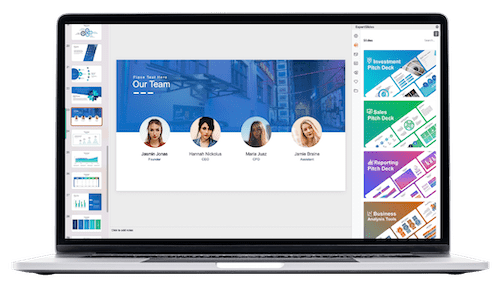Presentation of Topics – Tips and Tricks
Table of Contents
When presenting a topic, a captivating introduction is crucial for grabbing the audience’s attention. One effective strategy is to begin with a compelling narrative or anecdote related to the topic, which can establish a personal connection with the audience and spark their interest. Alternatively, posing a thought-provoking question or highlighting a relevant problem can create curiosity and anticipation, making the audience more receptive to the information being presented.
The use of multimedia elements, such as videos, images, or music, can also set the tone for the presentation and capture the audience’s attention from the outset. A well-crafted introduction should also clearly outline the purpose and objectives of the presentation, providing the audience with a roadmap of what to expect. This helps the audience stay focused and engaged throughout the presentation.
Establishing credibility and expertise on the topic early on is also vital, as it builds trust and confidence with the audience. A engaging introduction is essential for setting the stage for a successful presentation and capturing the audience’s attention from the start. A clear and organized structure is vital for effectively presenting a topic.
A logical and sequential flow of information, starting with an introduction, followed by the main body, and concluding with a summary and closing remarks, is essential. Within the main body, using clear and concise headings and subheadings can break down the information into manageable sections, making it easier for the audience to follow along and understand the key points. Visual aids, such as slides, charts, or diagrams, can also present information in a clear and visually appealing manner, serving as a roadmap for the audience and reinforcing the information being presented.
Transitions and signposts can signal shifts between different sections or topics, helping the audience stay oriented and engaged throughout the presentation. By using these strategies, clear organization can be achieved, ensuring that the presentation is easy to follow and understand, and ultimately enhancing the overall impact of the message.
Key Takeaways
- Use a compelling story or shocking statistic to grab the audience’s attention in the introduction
- Organize the content in a clear and logical manner to help the audience follow along easily
- Utilize visual aids such as slides or props to enhance the presentation and keep the audience engaged
- Encourage audience interaction through questions, polls, or small group discussions to keep them involved
- Practice effective delivery techniques such as varying tone and pace, making eye contact, and using gestures to keep the audience engaged
- Plan and manage time effectively to ensure all key points are covered within the allotted time frame
- Prepare for handling questions and feedback by anticipating potential inquiries and being open to constructive criticism
Visual Aids
 Effective Presentation Techniques
Effective Presentation Techniques
Visual Aids: Enhancing Understanding and Engagement
Visual aids are a crucial component of any effective presentation, as they can significantly enhance understanding, retention, and engagement among the audience. To use visual aids effectively, it’s essential to keep them simple and uncluttered, focusing on conveying key points or concepts in a clear and visually appealing manner. This can be achieved through the use of concise text, relevant images or graphics, and minimalistic design elements. By doing so, you can avoid overwhelming the audience with too much information and ensure that the visual aids complement rather than distract from your verbal presentation. Additionally, it’s vital to ensure that visual aids are relevant and directly support the key points being made in your presentation, providing additional context or clarification for the audience.
Strategic Use of Visual Aids
It’s also important to use visual aids strategically throughout the presentation, rather than overwhelming the audience with too many visuals at once. By using visual aids sparingly and purposefully, you can maximize their impact and effectiveness in conveying your message. Overall, visual aids are a powerful tool for enhancing the overall impact of your presentation and should be used thoughtfully and strategically.
Audience Interaction: Encouraging Engagement and Participation
In addition to using visual aids, another effective way to engage your audience during a presentation is through interactive elements. This can include activities such as polls, quizzes, or group discussions that encourage active participation from the audience. By incorporating interactive elements into your presentation, you can create a more dynamic and engaging experience for the audience, while also providing opportunities for them to apply and reinforce their understanding of the topic at hand. One effective strategy for audience interaction is to pose open-ended questions or prompts that encourage reflection and discussion among the audience. This can help to stimulate critical thinking and engagement, while also providing valuable insights into the perspectives and experiences of the audience members. Another approach is to incorporate hands-on activities or demonstrations that allow the audience to directly engage with the topic in a tangible way.
Effective Delivery

Effective Delivery
The delivery of a presentation is just as important as its content, as it can greatly influence how well the message is received by the audience. One key tip for effective delivery is to use confident body language and vocal delivery that conveys enthusiasm and conviction in your message. This can include maintaining good posture, making eye contact with the audience, using expressive gestures, and varying your vocal tone and pace to keep the audience engaged.
Another important aspect of effective delivery is to speak clearly and concisely, avoiding jargon or overly technical language that may be difficult for the audience to understand. It’s also important to use a conversational tone that is relatable and engaging for the audience, rather than coming across as overly formal or rehearsed. Additionally, it’s important to be mindful of your pace and timing during delivery, allowing for pauses and moments of reflection that give the audience time to process and absorb the information being presented.
Managing Time
Managing time effectively during a presentation is crucial for keeping the audience engaged and ensuring that all key points are covered within the allotted time frame. One effective strategy for managing time is to create a detailed outline or script for your presentation that includes estimated time allocations for each section or topic. By doing so, you can ensure that you stay on track and avoid spending too much time on any one point.
Another important tip for managing time is to practice your presentation multiple times beforehand, paying attention to how long each section takes to deliver. This can help you identify any areas that may need to be condensed or expanded in order to fit within the time constraints. It’s also important to be mindful of pacing during delivery, allowing for natural pauses and transitions between different sections of the presentation.
Overall, managing time effectively is essential for maintaining a smooth and engaging flow throughout your presentation.
Handling Questions and Feedback
| Topic | Tips and Tricks |
|---|---|
| Engage the audience | Use storytelling, ask questions, and encourage participation |
| Visual aids | Use slides, videos, and images to enhance understanding |
| Body language | Use confident posture, eye contact, and gestures to convey your message |
| Practice | Rehearse your presentation to improve delivery and timing |
| Feedback | Solicit feedback from peers to improve your presentation skills |
Handling Questions and Feedback
After delivering a presentation, it’s important to be prepared for questions and feedback from the audience. One key tip for handling questions is to actively encourage participation by inviting questions throughout the presentation rather than waiting until the end. This can help to create a more interactive and engaging experience for the audience, while also providing opportunities for clarification or elaboration on key points.
When responding to questions, it’s important to listen carefully and provide thoughtful and concise answers that address the specific concerns or inquiries raised by the audience. It’s also important to be open-minded and receptive to feedback from the audience, acknowledging any valid points or perspectives that are shared. Additionally, it’s important to remain composed and professional when addressing challenging or critical questions, maintaining a respectful and constructive dialogue with the audience.
In conclusion, delivering an effective presentation requires careful planning, clear organization, engaging delivery, and thoughtful interaction with the audience. By following these tips and tricks, you can enhance your ability to captivate and inform your audience while leaving a lasting impression with your message.
FAQs
What are some tips for presenting topics effectively?
Some tips for presenting topics effectively include knowing your audience, organizing your content in a clear and logical manner, using visual aids to enhance understanding, and practicing your delivery to ensure confidence and clarity.
How can I engage my audience during a presentation?
You can engage your audience during a presentation by asking questions, encouraging participation, using storytelling techniques, and incorporating interactive elements such as polls or group activities.
What are some common mistakes to avoid during a presentation?
Common mistakes to avoid during a presentation include reading directly from slides, speaking too quickly, using excessive jargon, and failing to make eye contact with the audience. It’s also important to avoid overloading your slides with text or images.
How can I effectively manage my time during a presentation?
To effectively manage your time during a presentation, it’s important to practice and time your delivery beforehand, prioritize key points, and be prepared to adjust your pace if necessary. Additionally, using visual cues or a timer can help you stay on track.
Get 15+ Mio. PowerPoint Assets - FREE SIGN-UP

Sign up for free to our PowerPoint extension, ExpertSlides. Everything you need, directly in PowerPoint. No credit card required.
Related Posts
Recent Posts
Main Menu
Knowledge base
Useful Links






